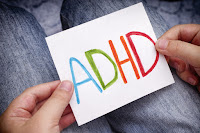In my nutritional practice I see more and more parents deal with the beast, that is ADHD. I’ve touched on this in my article, "Hyperactive Enigma," but I want to go more in depth on taming the ADHD beast when it comes to school work.
The past couple of generations, including my own Gen X, didn’t have an ADHD problem, or if we did it was nothing compared to what we deal with today. It’s a simple multi-pronged approach, and it starts with diet.
How we eat directly affects the body, how we feel, and of course it affects ADHD. Here’s why.
The body produces a certain amount of adrenaline. It sends glucose to energize the brain and muscles. Problem is adrenaline can sometimes send too much glucose to said areas causing a hyperactive response known as adrenaline dominance. When children are allowed to consume sugar and carbohydrates that is in essence feeding the beast, adding insult to injury.
When making dietary changes, remember to keep it simple at first, especially if any of the family members are picky eaters. It’s a common theme I hear that a child is a picky eater. Being a picky eater isn’t an issue. We simply change what foods are available to them at home. If chips, cookies, and crackers aren’t in the house then they, and you, won’t eat them.
Dietary changes are best made as a family unit. Your kids eat what you eat. Sit down together and make a list of low carb foods everyone is willing to eat. Make a category for protein, vegetables, and fruits. Start with animal protein. Write down what proteins the family likes: chicken, ground beef, fish, etc. Then make a list of non-starchy vegetables everyone likes. Then a list of fruits the family likes. Even if the list is small, it’s a good start. If you need help choosing low carb foods, my go-to resource is Diet Doctor.
Another way to get your child to be less of a picky eater is to include them in what you’re cooking for dinner. Give them two options per macronutrient. Chicken or ground beef. Black-eyed peas or green beans. This way they have a say in what is set before them. Also, you can have fun and create a menu, so it makes them feel like they’re eating out but at home.
Speaking of eating out. It’s going to happen. With various extracurricular schedules, cooking at home sometimes isn’t an option, so what do you do? Stick to low-carb as best as possible. It doesn’t necessarily eliminate drive-thru establishments. There are some grilled chicken options out there. It may not taste as good as the deep fried version, but it’s healthier. Keep an eye on sugary dipping sauces. Ranch and bleu cheese are better choices. Substitute french fries for fruit or a salad. These little changes will bear fruit long term, and you’ll see it in your child’s behavior and school grades.
One more thing that will help the family stick to a low-carb diet is planning ahead. Preparing food in advance means simply heating it up in the microwave and serve.
With diet aside there are two other areas that can cause an outpouring of adrenaline, feeding the ADHD beast: lack of exercise and electronic devices. These two go hand-in-hand.
When I was a kid, we played outside, we ran around breaking a sweat, in turn burning off excess adrenaline and the stress hormone, cortisol. Without exercise, excess adrenaline will transpire in other ways such as temper tantrums and outbursts.
Instead of playing and running and getting all of that excess adrenaline out, we now supplement it with electronic devices that add to the adrenaline problem. Even if the video game is harmless, or even educational, it can still create more adrenaline. The same goes for watching TV, movies, and streaming.
The answer to taming the wild beast is to eat a low carb diet as a family. Limit electronic stimulus, before homework and bedtime. Have the kids run around outside to burn off adrenaline and cortisol.
Before your child begins homework let them have a high protein/low carb snack such as cheese sticks. Make sure they have a chance to run around before beginning homework, and no electronic devices until homework is done. This should improve mood, behavior, and better grades.
by John Connor, CNC
Subscribe to:
Post Comments (Atom)
Enter Sandman: Off to Never-Never Land
Insomnia is the most common sleep disorder that affects a person from either falling asleep or staying asleep. This concerns upward to 50 pe...

-
While fats have been given a bad reputation for decades, most will agree there’s at least one type of fat we all need–omega 3 fatty acids...
-
Testosterone is an androgen hormone produced by both men and women, but found predominantly in men. Production of this hormone begins at pub...
-
There is a correlation between happiness and health. In fact, there are four distinct levels of happiness that are directly involved in yo...




Using a standing desk made the difference, another game-changing move was starting to use the Ink for all tool http://bit.ly/2DWi1K9
ReplyDeleteJust learned my son has ADD. He’s a senior. Getting organized enough to write is tough for him. Thankfully, we recently discovered INK, he is able to really buckle down since he started writing with it. This seemed like a good place to share this: http://bit.ly/2DWi1K9
ReplyDelete